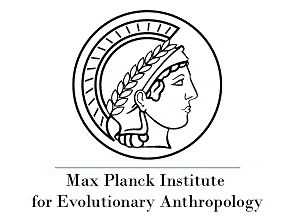The Central Kalahari area with a focus on ǂHoan (Ju-ǂHoan family): Language contact and population genetics
1 Population relationships amongst Khoisan of Botswana
2 Documentation of ǂHoan with a focus on contact influences
1 Population relationships amongst Khoisan of Botswana
1.1 Khoisan populations
- In his classification Greenberg (1963) defined Khoisan as a language family that included all non-Bantu click languages of Southern-East Africa.
- Click sounds were interpreted as signals of an ancestral state, spoken by relic groups.
- The genealogical unity of Khoisan languages is contested by a number of specialists (e.g. Güldemann and Vossen 2000)
- Three major lineages are distinguished: Tuu, Ju-ǂHoan and Khoe-Kwadi.
- Shared linguistic features may be the result of contact rather than inheritance, leading Güldemann to propose a linguistic area called “Kalahari Basin” (1998).
- Areal contact is compatible with findings in cultural anthropology (Barnard 1992) and genetics (Vigilant et al. 1991, Chen et al. 2000)
- The amount of differences between groups suggests that population contact might be at the origin of the shared linguistic (as well as sociocultural) features.
1.2 A genetic approach
- In this project we are examining the genetic variability of several Khoisan populations with the tools of molecular anthropology
- Our main goal is to reveal the past demographic events leading to the present-day genetic makeup of the populations
- We will investigate whether there are significant differences between the three proposed major groups, which would imply different origins
- In case some of the ethnolinguistic groups appear genetically less differentiated, we will try to interpret the possible dynamics in terms of recent contact vs. ancient genealogical unit
- We will compare the genetic data from Khoisan with neighboring Bantu groups to assess the degree of admixture
1.3 Data from literature and relevance of the project
- A small number of genetic studies investigated Khoisan populations, but they all agreed with a major finding: the presence of ancestral markers (haplogroups) found on both Y chromosome and mtDNA, which have diverged at the root of the phylogenetic tree of modern humans.
- The definition of these Khoisan groups in the genetic literature is often misleading (Mitchell 2010)
- Small number of different groups was considered (five populations can be found: two Ju, one Kalahari Khoe, and two Khoekhoe)
- In almost all cases geographic and linguistic characterizations are too generic and approximate
- In this project we carried out fieldwork all over Botswana collecting saliva samples from donors who have been asked for their origin and language up to the second generation.
- All three major groups have been included: Tuu, Khoe-Kwadi (Kalahari) and Ju-ǂHoan
- For comparison, samples from Bantu speaking ethnolinguistic groups have been collected by collaborator Dr. Mpoloka of the University of Botswana
References
Barnard, A. 1992. Hunters and herders of southern Africa: a comparative ethnography of the Khoisan peoples. Cambridge: Cambridge University Press.
Chen, Y. S., Olckers, A., Schurr, T.G., Kogelnik, A.M., Huoponen, K., Wallace, D.C. 2000. "mtDNA variation in the South African Kung and Khwe and their genetic relationships to other African populations." American Journal of Human Genetics 66,4: 1362-83.
Greenberg, J. H. 1963. "The languages of Africa." International Journal of American linguistics 29, 1. Bloomington: Indiana University.
Güldemann, T. 1998. "The Kalahari Basin as an object of areal typology - a first approach." In Schladt, Mathias (ed.), Language, identity, and conceptualization among the Khoisan. Köln: Rüdiger Köppe, 137-96.
Güldemann, T. & Vossen R. 2000. "Khoisan." In Bernd Heine & Derek Nurse (eds.), African languages: An introduction, 99–122.
Mitchell, P. 2010. "Genetics and southern African Prehistory: an archaeological view." Journal of Anthropological Sciences 88: 73–92.
Vigilant, L., Stoneking, M., Harpending, H., Hawkes, K., Wilson, A. C. 1991. "African populations and the evolution of human mitochondrial DNA." Science 253: 1503-7.

|

|
Contact
| Principal investigator | Location |
| Brigitte Pakendorf | MPI for Evolutionary Anthropology |
| Email: Brigitte.Pakendorf@ish-lyon.cnrs.fr | Leipzig, Germany |
| Researchers | |
| Chiara Barbieri | Linda Gerlach |
| Email: chiara_barbieri@eva.mpg.de | Email: linda_gerlach@eva.mpg.de |
| Falko Berthold | Further information |
| Email: falko_berthold@eva.mpg.de | Max Planck Research Group on Comparative Population Linguistics |

